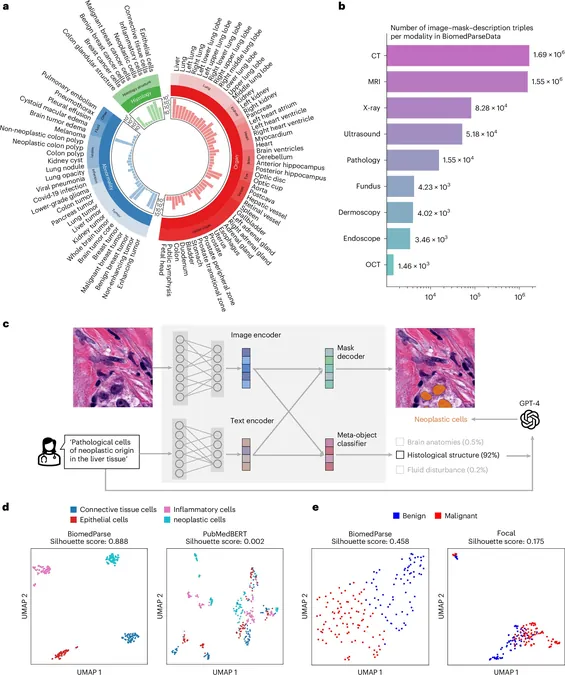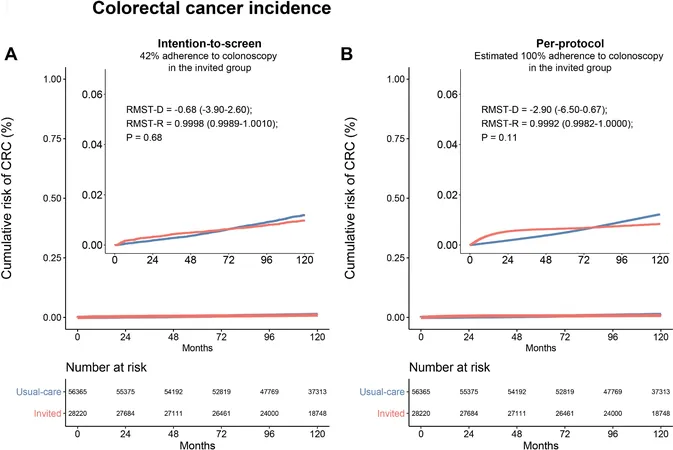
Revolutionary AI Tool Set to Transform Systemic Disease Detection Through Advanced Medical Imaging
2024-11-18
Author: Wei Ling
Revolutionary AI Tool Set to Transform Systemic Disease Detection Through Advanced Medical Imaging
In a groundbreaking advancement, artificial intelligence is rapidly evolving in its capability to interpret medical images. A promising new AI tool has been tested within Britain's National Health Service, successfully analyzing the mammograms of over 10,000 women. This remarkable technology not only identified cancer cases accurately but also detected 11 instances that were previously overlooked by doctors.
Despite such advancements, diagnosing systemic diseases like lupus and diabetes poses a significant challenge. This is attributed to the multifaceted nature of these diseases, which often require the analysis of various types of medical images, including MRIs, CT scans, and X-rays.
Enter BiomedParse, an innovative AI medical image analysis model developed by Sheng Wang, an assistant professor at the University of Washington’s Paul G. Allen School of Computer Science & Engineering. Wang collaborated with experts from Microsoft Research and Providence Genetics and Genomics to create this robust tool, enabling medical professionals to upload various types of images and pose questions in plain English.
Published on November 18 in the journal *Nature Methods*, the study highlights the significance of this tool in enhancing diagnostics in medicine.
The Future of Medical Imaging: Multimodal Generative AI
Wang’s lab is primarily engaged in multimodal generative AI, focusing on processing numerous types of medical images simultaneously. Unlike previous research that considered one image type at a time—such as pathology images for cancer—BiomedParse amalgamates various imaging modalities. For instance, diabetes can manifest in multiple parts of the body—eyes, kidneys, and teeth—underscoring the need for a comprehensive analysis through different imaging techniques.
The AI distinguishes itself from standard image analysis tools used in consumer applications, which often deal with significantly smaller images. Medical images can be over 100,000 pixels in size, akin to the difference between a tennis ball and a tennis court. To tackle this, Wang's team employs a unique strategy of dividing these extensive pathology images into smaller, manageable segments, akin to composing sentences.
An AI-Powered Search Engine for Medical Images
The potential applications for BiomedParse are vast. It acts as a search engine for medical imaging, simplifying the communication process for non-specialists regarding complex medical images that typically require extensive training. Furthermore, it allows seasoned practitioners to quickly analyze images while identifying subtle variations that may be crucial for accurate diagnosis.
With more than 90% accuracy compared to human experts in just 0.2 seconds, this model enhances diagnostic efficiency. The AI focuses on critical areas, guiding doctors on where to concentrate their analysis. It is essential to understand that while this tool aids in diagnostics, it is designed to augment doctors' skills rather than replace them.
Looking Ahead: Ethical Considerations and Future Developments
The demand for such advanced technology is evident, and BiomedParse is already in a demo phase. The next steps involve collaborating with UW Medicine to further refine the model and ensure its deployment, all while obtaining patients’ consent.
However, with great technological advances come great responsibilities. There are growing concerns regarding the ethical implications of employing generative AI in medical contexts, including issues like data privacy and the risk of AI "hallucinations," which can lead to incorrect conclusions if misapplied. Wang’s team is proactive in addressing these challenges, focusing on mechanisms to detect unethical inquiries and ensuring that such questions do not result in inappropriate responses.
In a world where the integration of AI into healthcare is becoming increasingly prevalent, the pursuit of ethical guidelines cannot be overstated. Wang’s transition from drug discovery and genomics to medical imaging signifies a shift towards the dynamic potentials that AI holds for revolutionizing diagnostics.
As the healthcare sector continues to embrace digital transformation, tools like BiomedParse promise not only to improve the accuracy and efficiency of systemic disease detection but also to empower practitioners in the ongoing battle against complex health issues. The future of medicine is not just on the horizon; it is already unfolding with each advancement in AI technology.



 Brasil (PT)
Brasil (PT)
 Canada (EN)
Canada (EN)
 Chile (ES)
Chile (ES)
 España (ES)
España (ES)
 France (FR)
France (FR)
 Hong Kong (EN)
Hong Kong (EN)
 Italia (IT)
Italia (IT)
 日本 (JA)
日本 (JA)
 Magyarország (HU)
Magyarország (HU)
 Norge (NO)
Norge (NO)
 Polska (PL)
Polska (PL)
 Schweiz (DE)
Schweiz (DE)
 Singapore (EN)
Singapore (EN)
 Sverige (SV)
Sverige (SV)
 Suomi (FI)
Suomi (FI)
 Türkiye (TR)
Türkiye (TR)